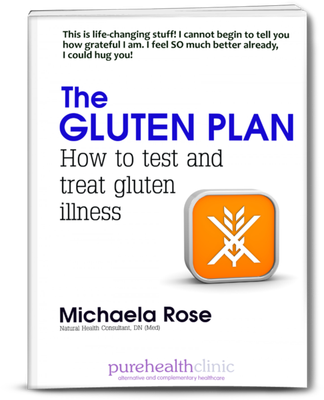
Autoimmune Tests
First, ask your GP to do a quick autoimmune marker test such as ANA or ANCA. Even better, do the Cyrex 5 Multiple Autoimmune Reactivity Screen for a comprehensive check. Then, if positive, start investigating triggers.
You can read lots more about Autoimmunity here. You can see what's covered and the conditions associated with each marker in Cyrex 5 here.
If someone suspects autoimmunity might be a factor in a condition, they will usually look at the main systemic autoimmunity markers. Those are usually ANA (anti-nuclear antibodies) and ANCA (Anti-Neutrophil Cytoplasmic antibodies – easy for you to say!) and RF (rheumatoid factor). Your GP can do that for you.
The idea is to find evidence that autoimmunity might be going on and then do deeper screening to identify exactly what. These also act as a good general progress marker for treatment – levels should be reducing over time if your programme is working.
More than one autoimmune antibody is looked for generally because they can appear in perfectly healthy people – especially as we age or have inflammation. The trick is to see the trend.
ANA is used mainly to help diagnose systemic lupus erythematosus (SLE), but can also be positive in cases of scleroderma, Sjögren’s syndrome, Raynaud’s disease, juvenile chronic arthritis, rheumatoid arthritis, antiphospholipid antibody syndrome, autoimmune hepatitis, polymyositis and many other autoimmune and non-autoimmune diseases.
ANCA is used when a person is suspected of having systemic autoimmune vasculitis. Early in the disease, symptoms may be vague or nonspecific, such as fever, fatigue, weight loss, muscle and/or joint aches, and night sweats. Later on, it starts to affect small blood vessels eg. in the eyes, skin.
RF may be present in people with rheumatoid arthritis but also in patients with Sjogren’s
syndrome and lupus.
If you find any of those positive and/or want a more comprehensive screen of key organs and systems, use Cyrex 5, the multiple autoimmune reactivity screen. You can see more specific Cyrex autoimmune tests here.
Testing Tips...
Q: Do the Cyrex samples need centrifuging?
A: Yes.
Q: If I have one Cyrex test done, can I have another one done on the same blood sample?
A: Yes, you can. You can add on multiple tests within the first 21 days. They then freeze your blood sample for 90 days, so between 21 and 90 days you can add on other tests once only and they will be done once the sample has thawed. This is most commonly done, for example, if you have done Cyrex 3, found a problem and then want to test the cross-reactive foods with Cyrex 4 and/or the predictive autoimmune antibodies Cyrex 5. We just ask them to use the same sample. I wish all the labs would do this!
Q: Can children do Cyrex tests?
A: Yes, it is fine for under 16s. For small children, the lab says: “No restriction on age. If they are old enough to be eating gluten, they can be tested. The difficulty is generally taking the blood.”
Q: I have got saliva and blood vials in my test kit. Is that right?
A: Yes, there is one test kit for all the tests so just use the one you need and discard the other, or keep it for later in case you need a blood test further on. The UK doesn’t do the Cyrex saliva test.
Q: Will I need follow-up tests?
A: The best way of finding out your progress is to repeat your test so you know you are on the right diet, protocol and path to heal.
Q: Are there any medications, foods, conditions, or other factors that could interfere with the results of a Cyrex test?
A: Yes. While Cyrex is unable to provide an exhaustive answer to this question due to the interactive complexities and varieties of medications and patient circumstances, the following has been noted:
Immunosuppressant and corticosteroid drugs can reduce antibody production and cause false negative results. Inhalers specifically can affect the results of Cyrex’s oral fluid testing (Array 1). Wait two weeks after completion of inhalant dosages before collecting the specimen. If you are on steroid treatment, it doesn’t necessarily mean you can’t have the Cyrex tests, but you need to bear in mind that any scores might be lower than they would be without the steroids so that could mean they look OK or low level when they are not. If in doubt, talk with your health professional and/or Cyrex for advice.
Limited assessments on the effects of aspirin, acetaminophen, and antipsychotics on Arrays 2-4 have been performed. No noticeable effects were observed.
Unknown cross-reactive epitopes from foods and microorganisms may stimulate the antibody production in the absence of a true antigen. Cyrex has already developed Array 4 in order to recognize the most common antigens in this regard.
A gluten-free diet can cause false negative results on gluten protein/peptide tests.
Certain conditions, such as ileal pouch surgery, may cause a false positive celiac serology.
Q: How soon after finishing steroids can a patient do Cyrex testing?
A: 60 days. It takes this period of time for the medication to clear the system and allow the normalized production of antibodies, required for immune testing, to resume.
Q: Do I have to fast before my Cyrex test?
A: Detailed specimen collection instructions regarding fasting are included in each Specimen Collection Kit, which must be read before collecting any specimens. Blood testing has no fasting requirements or collection restrictions. However, eating a high fat meal prior to your blood draw can cause your serum specimen to be lipemic. Lipemic specimens are rejected by Cyrex Labs.



